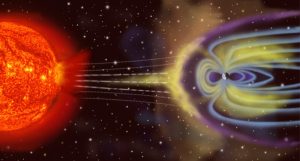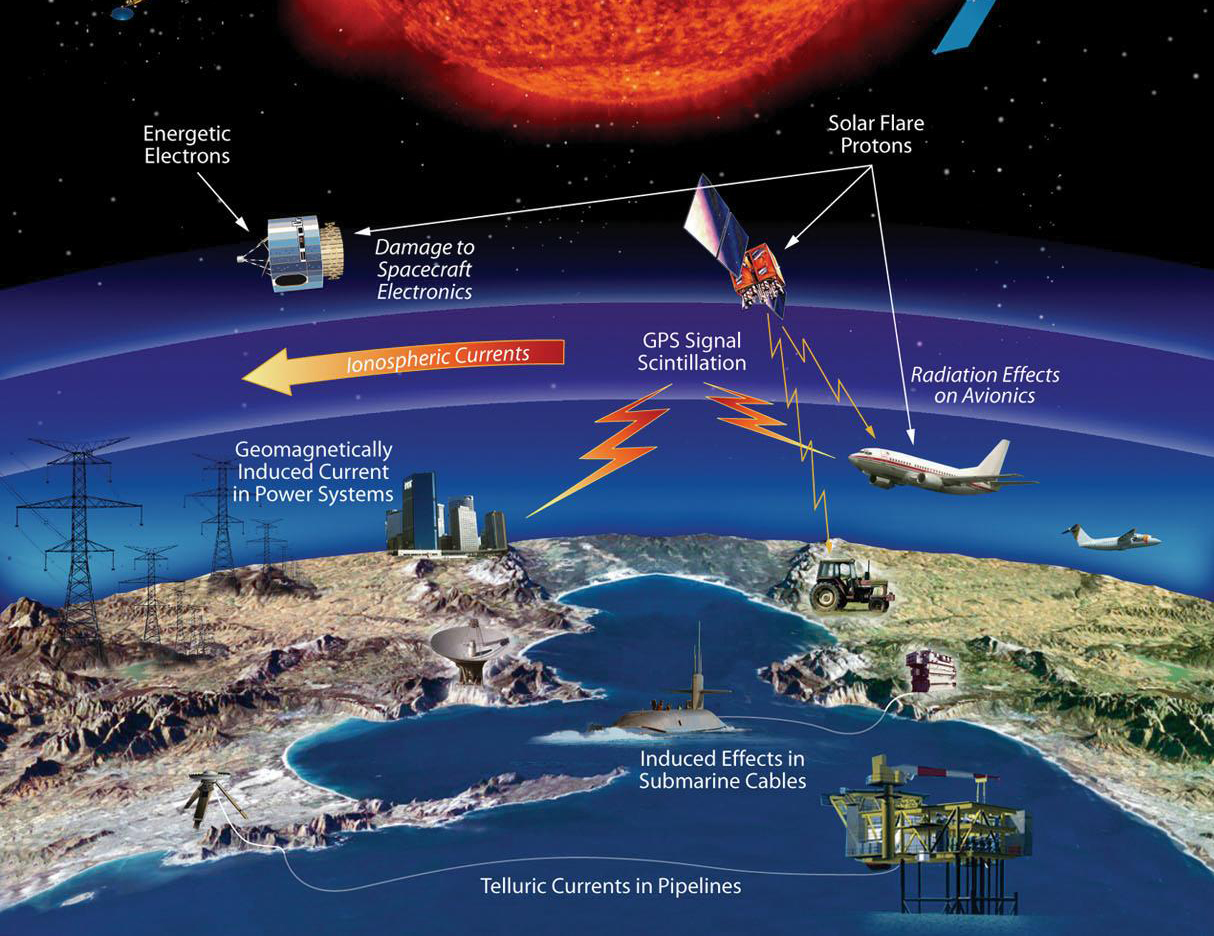[Update: In December 2022, the FAA published the Aviation Weather Handbook (FAA-H-8083-28) which replaced Advisory Circulars 00-6 and 00-45.]
Today I would like to discuss weather, specifically the all-important topics of Galactic Cosmic Radiation and Solar Eruptive Activity. Wait, say what? That’s what I thought when reviewing my newly printed edition of the FAA Advisory Circular (AC) Aviation Weather (AC 00-6B). I came across a new chapter 23, titled “Space Weather.” To say the least I was intrigued and a bit surprised—how often are pilots really operating 62 miles above the Earth? Now don’t worry, galactic cosmic radiation and solar eruptive activity is not actually a required knowledge element for any certificate rating, at least not yet. I’m sure down the road there will be a rocket ship add-on rating to your Commercial Pilot Certificate or something along those lines—Virgin Galactic isn’t going to fly itself (I’m only half-joking).
I know absolutely nothing about space weather, so I dove right in to learn something new. Right off the bat I noticed an interesting commonality, the sun is the dominant source of conditions described as space weather. Sound familiar? Well it should, because the same is said for weather here on planet earth. As the sun heats various parts of the atmosphere at different rates it causes masses of both warm and cold air. As these masses of air move they cause wind, further driving areas of higher and lower temperatures to move around. You can go pretty far in depth with an explanation as to what causes weather, but it all boils down to the simple fact you will hear throughout your aviation training: weather is caused by the uneven heating of the earth’s surface.
You may be asking yourself why space weather is included in this AC. Well to be honest in my opinion I don’t so much believe that the theory of space weather is important to your average general or commercial aviation pilot. I do however believe that the effects space weather can have on aircraft operations is important. The tail end of chapter 23 discusses four areas in relation to aircraft operations that on a daily basis can be affected by what is happening tens of thousands of miles away.
AC 00-6B 23.12
Communications
HF communications at low- to mid-latitudes are used by aircraft during transoceanic flights and routes where line-of-sight VHF communication is not an option. HF enables a skip mode to send a signal around the curvature of Earth. HF communications on the dayside can be adversely affected when a solar flare occurs and its photons rapidly alter the electron density of the lower altitudes of the ionosphere, causing fading, noise, or a total blackout. Usually these disruptions are short-lived (tens of minutes to a few hours), so the outage ends fairly quickly.
HF communications at high latitudes and polar regions are adversely affected for longer periods, sometimes days, due to some space weather events. The high latitude and polar ionosphere is a sink for charged particles, which alter the local ionization and provide steep local ionization gradients to deflect HF radio waves, as well as increase local absorption.
Satellite communication signals pass through the bulk of the ionosphere and are a popular means of communicating over a wide area. The frequencies normally used for satellite communications are high enough for the ionosphere to appear transparent. However, when the ionosphere is turbulent and nonhomogeneous, an effect called scintillation, a twinkling in both amplitude and phase, is imposed upon the transmitted signal. Scintillations can result in loss-of-lock and inability for the receiver to track a Doppler-shifted radio wave.
Navigation and Global Positioning System (GPS)
Space weather adversely affects GPS in three ways: it increases the error of the computed position, it causes a loss-of-lock for receivers, and it overwhelms the transmitted signal with solar radio noise.
Radiation Exposure to Flightcrews and Passengers
Solar radiation storms occurring under particular circumstances cause an increase in radiation dose to flightcrews and passengers. As high polar latitudes and high altitudes have the least shielding from the particles, the threat is the greatest for higher altitude polar flights. The increased dose is much less of an issue for low- and mid-latitude flights.
Radiation Effects on Avionics
The electronic components of aircraft avionic systems are susceptible to damage from the highly ionizing interactions of cosmic rays, solar particles, and the secondary particles generated in the atmosphere. As these components become increasingly smaller, and therefore more susceptible, the risk of damage also increases.
Very interesting stuff. These are all things that as you progress in your aviation career and maybe one day start flying international routes you will want to have in your bank of knowledge.







